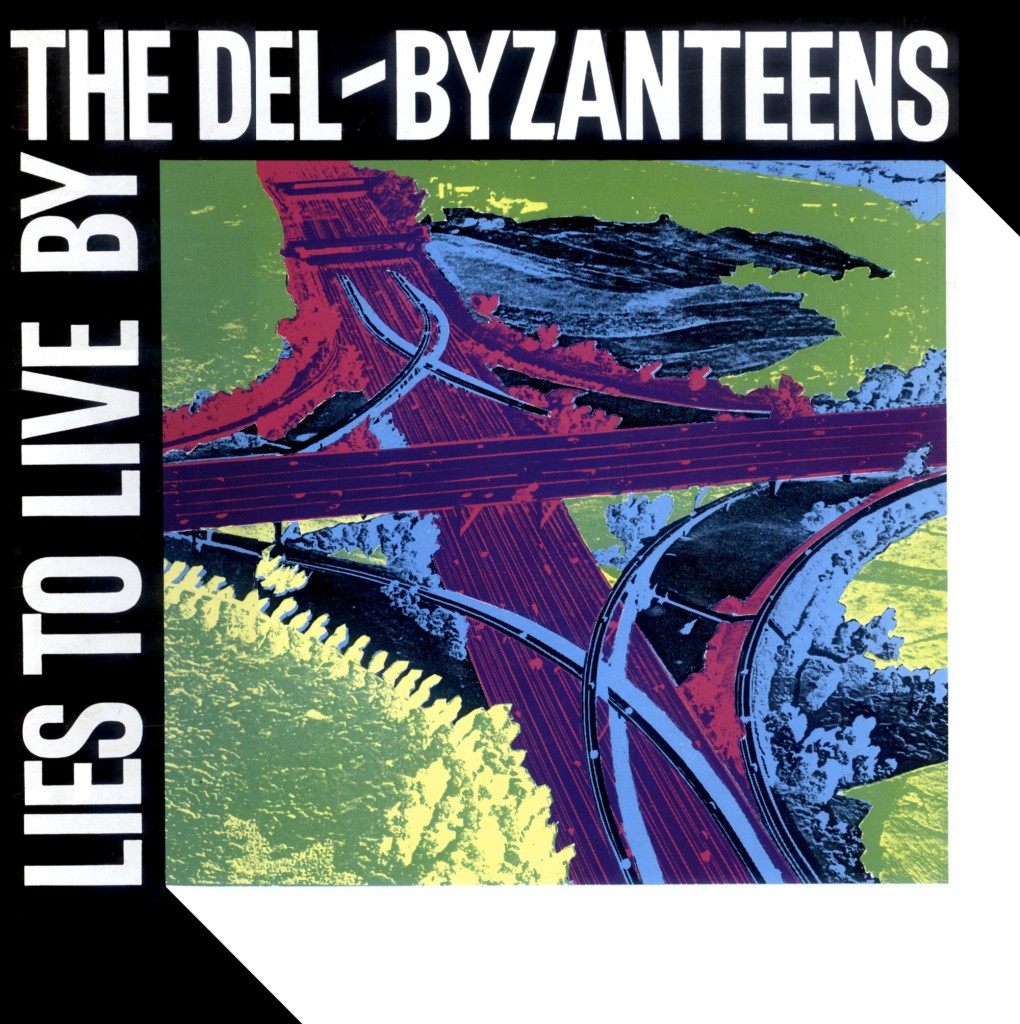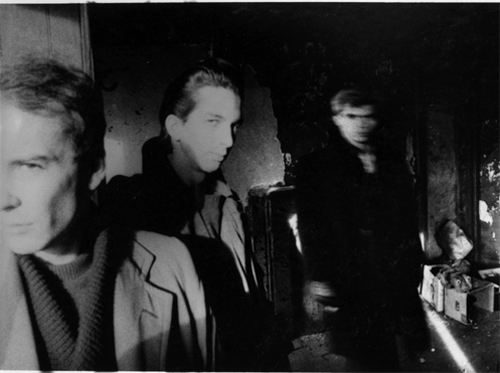 Endorsements and medallions first. The Del-Byzanteens’ « Lies to Live By » is a debut equal to anything out of New York these past six years. Now let me tell you why.
Endorsements and medallions first. The Del-Byzanteens’ « Lies to Live By » is a debut equal to anything out of New York these past six years. Now let me tell you why.
Alternative American music can be so lean and nervous, so fearful of luxury and amplitude. Sure ever since Richard Hell and Tom Verlaine and through Byrne and Chance’s crews, New York musicians have been cultivating a guitar style that communicates a subterranean stress but even when they take to synthesizers, they’re still laying down tripwires for the nerves.
But didn’t I say « alternative » American music back there for that’s the nub. With the impossibility of a unified pop-culture that would give some encouragement to questioning imaginations, some confidence that they need not address themselves solely to minorities, dissenting Americans retreat to a painfully self-concious bohemian subculture. From the Del-Byzanteens, you’ll receive another samidzat; in « Lies To Live By », more music warning of betrayal and faithlessness.
The Del-Byzanteens know beauty but the beasts in their back-garden are their priority. In reckless desperation reversing the terms, the title track announces their themes when they admit: « The truth´s a wound but the lies a gun/Truth´s the blues but lies have fun ». Don’t straightforwardly take those axioms as a last-gasp collapse into cynical falsity; their music plays the wound, the blues, the « truth ».
With Phil Kline’s guitar pared to the bone, the Del-Byzanteens could be bare Bunnymen on a psychedelic decline not ascent. Even when Kline and his four colleagues, bassist Philippe Hagen, keyboardist Jim Jarmusch and their rimshot twins, Josh and Dan Braun, adapt foreign style, they drain them of any ceremonial colour. They reggae on « Draft Riot » and raga on « War », re-enter folk-rock space on « Sally Go Round The Roses » and deal their Eastern card on »Girls Imagination » but these are not the stratagems of cultural magpies intent on impressing you with their exotic record collections. Through the wringer of « Lies To Live By » everything comes out Del-Byzanteen.
They slowly graduate their message through the album leading up to the psychic gale warnings of the second side.
« Draft Riot » with its too-timely refrain « I don’t know what happened/I don’t know what you’re asking me for/Is that all that hapened?/Add it up and there ought to be more » summarizes the triviality of war and « conflicts » though « War » itself is the one under-weight track in such heavy company.
« Sally Go Round The Roses » takes the primitive perenial and re-locates the lady in an undomesticated urban landscape.
« Girls Imagination » finds Hagen fingering that bass rumble, the legacy of « Peter Gunn » and Lalo Schrifrin, now beloved by his American instumentalists before his companions settle for a sinuous but never sensually-flattering groove and close in mocking vocal tumult.
But it’s the closing tracks, « Welcome Machines » and « Appartment 13 » that mark the Del-Byzanteens as something more than your usual art-isans. « Welcome Machines » shows their backgrounding in the film world with more B-movie pulsations from Kline and Hagen and a siren’s alert from Jarmusch as they advise the approach of the outer limits of technology, warning « keep one step ahead of the impact ». By the opening of « Appartment 13 » the machines are in the house and salivating for the closing experimental instrumental.
Like Defunkt’s debut album, « Lies To Live By » marks the beast of dread and fights embitterment with countervailing passions.
David Byrne once remarked that we might be entering an absurd society where millions sat unemployed in tenements surrounded by useless video and other electronic equipement. The Del-Byzanteens alarmingly conjure with the same distortion of cultural possibility and economic and emotional stultification.
Bill Graham
The Hot Press
12/15/1982
